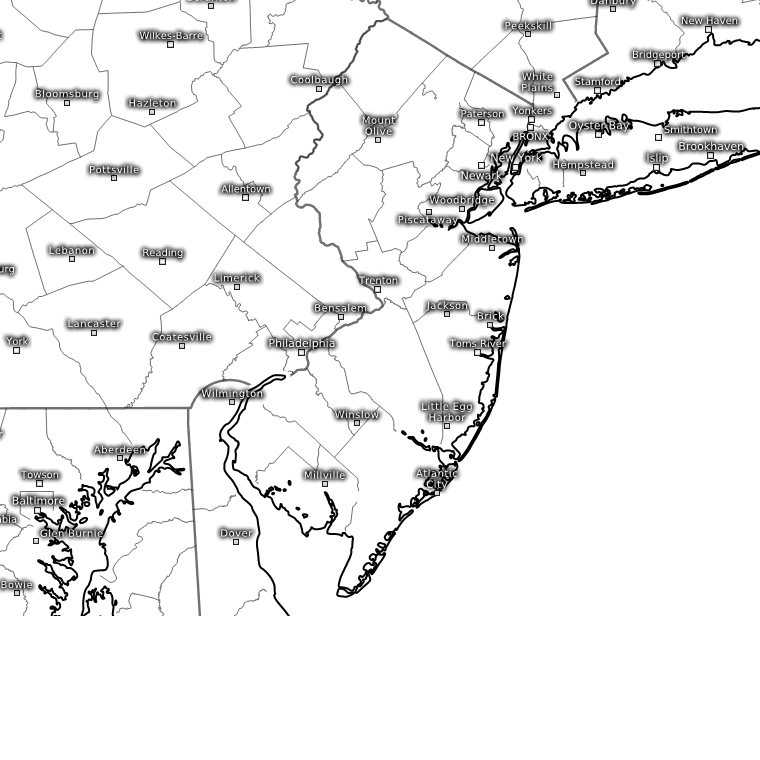This data is gathered from over a hundred radar towers located across the US. This is the highest resolution radar data available which enables you to see features such as sea breeze or outflow boundaries that standard resolution radar entirely misses. There is a notable constraint to radar data though. Because the earth is round and the radar beam is flat, the farther away from the radar tower the beam (energy) travels, the farther removed from the ground becomes. To see this in action, imagine a circle (earth) with a straight line emanating from some point on the circle if you continue this line out into space, it will gradually get farther and farther from the circle. Because of this phenomenon, the radar beam will only see precipitation falling through the mid levels of the atmosphere. A lot can happen between 0 and 5,000 feet and therefore the depiction of precipitation given by radar may differ some from what’s actually happening on the ground. Use radar data with caution especially if your area of interest is far from the nearest radar location!
We currently have two types of radar data available with plans to add more soon. The first type of data currently available is reflectivity. This is your standard radar data that shows precip or other solid/liquid particles in the atmosphere. A few tips on reflectivity data:
- In cold climates during the winter months, actual dBZ values rarely exceed 40. Anything larger than this is usually due to “bright banding” where the radar is seeing the part of the atmosphere where snowflakes are clumping together and melting into raindrops. This is helpful for picking out snow/mix/rain transition zones In all snow situations, dBZ values of 40 indicate 3-4”/hr snowfall rates and whiteout conditions.
- Bright reflectivity returns that are stationary and appear during both calm and inclement weather are usually land-based obstructions such as mountains, trees, or especially wind farms (nothing gets electromagnetic signals confused like spinning metal blades!).
- During severe weather situations, reflectivity signatures can provide valuable clues as to what threats to expect from a particular cell. Things to watch for:
- Bow echoes- when a storm looks like a bow (as in bow-and-arrow), it signals a strong push of cold outflow near the surface. Watch for strong winds along the leading edge of this!
- Hail cores- if you see dBZ values exceeding 60, watch for large hail. Raindrops rarely if ever exist in plentiful enough quantities to produce dBZ values >60 so the culprit is usually hail.
- Hook echoes- if you see a storm moving towards you that looks like a fish hook, especially a fish hook with a barb on the end, take cover! This signature indicates the presence of a strongly rotating mesocyclone- often an immediate precursor to tornado development.
- Radar can see things in the atmosphere other than precipitation. If satellite data shows clear skies but you see signatures on radar data, it could be anything from smoke from a fire to a flock of birds taking flight to dust particles collecting along a boundary. This is especially cool in the summer when sea breeze fronts show up on radar.











